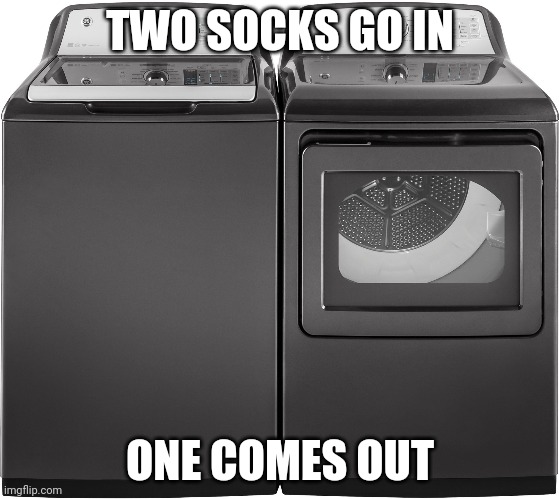
Posted on 08/04/2025 9:54:13 AM PDT by Red Badger

Your socks pick up microbes from every surface you step foot on. (Photo by K-FK on Shutterstock)
=================================================================
Your feet are microbial hotspots. The area between your toes is packed with sweat glands, and when we wrap our feet in socks and shoes, we trap that moisture in a warm, humid cocoon that’s ideal for microbial growth. In fact, your feet may be home to a miniature rain forest of bacteria and fungi, with anywhere from 100 to 10 million microbial cells per square centimeter of skin surface.
Not only do feet host a huge variety of microorganisms – up to 1,000 different species per person – but they also have a wider range of fungal species than any other part of the body. That means your feet aren’t just sweaty or smelly – they’re genuinely biodiverse.
Because your feet are microbe-rich, your socks become prime real estate for these same bacteria and fungi. Studies show that socks harbor both harmless skin residents, like coagulase-negative staphylococci, and potentially dangerous pathogens, including Aspergillus, Staphylococcus, Candida, Histoplasma and Cryptococcus. These microbes thrive in the warm, moist spaces between your toes, feeding on sweat and dead skin cells.
Their byproducts, such as volatile fatty acids and sulfur compounds, are what give sweaty feet, socks and shoes that notorious odor. It’s not the sweat itself that smells, but the microbial metabolism of that sweat. Perhaps unsurprisingly, smelly feet are so common the UK’s NHS has dedicated pages of advice on the issue.
VIDEO AT LINK.............
Why clean socks matter: Surprising medical benefits you need to know
The sock microbiome isn’t just influenced by your feet – it also reflects your environment. Socks pick up microbes from every surface you walk on, including household floors, gym mats, locker rooms and even your garden. They act as microbial sponges, collecting bacteria and fungi from soil, water, pet hair and dander, and the general dust of everyday life. In one study, socks worn for just 12 hours had the highest bacterial and fungal counts of any clothing item tested.
And those microbes don’t stay put. Anything living in your socks can transfer to your shoes, your floors, your bedding – and even your skin. In a hospital study, slipper socks worn by patients were found to carry floor microbes, including antibiotic-resistant pathogens, into hospital beds. It’s a reminder that foot hygiene isn’t just a personal issue – it can have broader implications for infection control and public health.
Super-Spreaders
Socks can also play a key role in spreading fungal infections like Tinea pedis (better known as athlete’s foot), a highly contagious condition that primarily affects the toes but can spread to the heels, hands, or even the groin. The infection is caused by dermatophyte fungi, which love warm, damp environments – exactly the kind you find in sweaty socks and tight shoes.
To prevent this, experts recommend avoiding walking barefoot in shared spaces like gyms and pools, not sharing socks, towels, or shoes, and practicing good foot hygiene, which includes washing and drying thoroughly between the toes. Topical antifungal treatments are usually effective, but prevention is key.
It’s also important to note that socks can retain fungal spores even after washing. So if you’ve had athlete’s foot, wearing the same pair again – even if it looks clean – could trigger reinfection.
The safest approach is to wear fresh socks daily and allow your shoes to dry out completely between wears. Choose breathable fabrics and avoid footwear that traps heat or causes excessive sweating.

Cleaning your socks do more than just keep your feet from smelling badly — it also kills bacteria and fungi that make take residence between your toes. (Photo by The Lazy Artist Gallery on Pexels)
How To Wash Your Socks Properly
Most laundry advice focuses on preserving fabric, color and shape – but when it comes to socks, hygiene matters more. Studies show that washing at typical domestic temperatures (86–104°F) may not be sufficient to kill bacteria and fungi. In fact, under-cleaned socks can act as infection vectors, especially in households with vulnerable people.
To properly sanitize your socks:
turn them inside out before washing to expose the inner surface where most microbes accumulate use an enzyme-based detergent, which helps break down sweat and skin debris wash at 140°F when possible, as the higher temperature helps detach and kill microbes steam iron your socks if you need to wash at lower temperatures – heat from ironing can destroy residual spores.
Cotton socks tend to tolerate higher temperatures better than synthetic blends, making them a better option for those prone to fungal infections. Drying socks in direct sunlight can also help: UV light has known antimicrobial effects.
The Forensic Power Of Sock Microbiomes Your socks might say more about you than you realize. In a US murder investigation, forensic scientists used soil bacteria found on a suspect’s socks to link them to the burial site of a victim.
The microbial profile of the socks closely matched that of the crime scene – suggesting the socks had picked up and preserved location-specific soil microbes. This emerging field of forensic microbiology shows how microbial signatures can offer valuable clues in legal contexts.
It’s a reminder that the ecosystems we carry on our bodies – and in our clothing – are not only complex and revealing but also surprisingly durable. Whether it’s helping to solve crimes or fueling a fungal outbreak, your socks are far more biologically active than they appear.
So next time you peel off a sweaty pair at the end of the day, spare a thought for the microscopic universe you’ve been walking around in. And maybe, just maybe, opt for that 60-degree wash.
Primrose Freestone, Senior Lecturer in Clinical Microbiology, University of Leicester. She does not work for, consult, own shares in or receive funding from any company or organization that would benefit from this article, and has disclosed no relevant affiliations beyond their academic appointment.
This article is republished from The Conversation under a Creative Commons license. Read the original article.
So, is the author pro-sweaty-feet or anti-sweaty-feet?

Goody, more fear porn. Dirty feet and socks are not really a problem, beyond the odor. Just put on clean socks when they get dirty or start to smell.
Which is why you always put on a sock and a sock, then a shoe and a shoe.
So toe jam is really a lot like yogurt mixed with blue cheese and magic mushrooms for the high?

But what if it’s raining?
Very simple to have clean feet and non smelly shoes or boots. Wash feet and toes thoroughly. Blow dry. Use powder and anti fungal spray. Good to go.
So going barefoot must be deadly.
I wonder how much they spent on this study to prove what everybody already knows, i.e., that your feet - just like every other part of your body - can accumulate bacteria which can also cling to your clothes.
Your socks pick up microbes from every surface you step foot on.
~~~
Stopped reading right there.
If you take off your socks, then soles/pads of your feet do the picking up.
I’m not greek. I’m down with socks
I think you’ve been hopping around on your head.
It took Primrose Freestone to give us this bombshell report.

Merino wool socks are the bomb!
Quite Interesting, considering it is by two different Freepers and wrong article under the first title:
Tucker Carlson Deliberately Chose To Suppress the Hunter Biden Laptop Story In 2020
8/4/2025, 12:54:13 PM · by marcusmaximus
X/Twitter ^ | 8/3/2025 | Laura Loomer
Your socks pick up microbes from every surface you step foot on. (Photo by K-FK on Shutterstock) ================================================================= Your feet are microbial hotspots. The area between your toes is packed with sweat glands, and when we wrap our feet in socks and shoes, we trap that moisture in a warm, humid cocoon that’s ideal for microbial growth. In fact, your feet may be home to a miniature rain forest of bacteria and fungi, with anywhere from 100 to 10 million microbial cells per square centimeter of skin surface. Not only do feet host a huge variety of microorganisms – up...
https://freerepublic.com/focus/f-chat/4332603/posts
And then, AT THE EXACT SAME TIME down to the second, and the same exact excerpt:
The Dirty Truth About What’s In Your Socks: Bacteria, Fungi And Whatever Lives Between Your Toes
8/4/2025, 12:54:13 PM · by Red Badger · 2 replies
Study Finds ^ | August 03, 2025 | Primrose Freestone, University of Leicester
Your socks pick up microbes from every surface you step foot on. (Photo by K-FK on Shutterstock) ================================================================= Your feet are microbial hotspots. The area between your toes is packed with sweat glands, and when we wrap our feet in socks and shoes, we trap that moisture in a warm, humid cocoon that’s ideal for microbial growth. In fact, your feet may be home to a miniature rain forest of bacteria and fungi, with anywhere from 100 to 10 million microbial cells per square centimeter of skin surface. Not only do feet host a huge variety of microorganisms – up...
https://freerepublic.com/focus/f-chat/4332604/posts
Now, one of them is deleted. But I still have the page up, where it is not deleted.
How does this happen?
Put in bread, abracadabra! toast comes out. What’s up with that?
I live in Florida.
What are ‘socks’?..................😏
Slight of foot..................
Disclaimer: Opinions posted on Free Republic are those of the individual posters and do not necessarily represent the opinion of Free Republic or its management. All materials posted herein are protected by copyright law and the exemption for fair use of copyrighted works.